- Home
- Encyclopedia
- The Wyoming March of Coxey’s Army
The Wyoming March of Coxey’s Army
In the spring of 1894, newspapers across Wyoming filled with stories of jobless men headed east along the railroads. Coxey’s Army, they were called, named for their leader. Many were hungry but in their minds, at least, they were bound for the center of the nation’s power. Their movement became the first political march on Washington.
Riding and sometimes stealing freight trains, camping where they could, they often depended on food people handed them at railroad stations or their camping grounds. In the decades since the Civil War, a few men had become the richest the world had ever seen: America’s “Gilded Age” was named for them. But most people, like these, were laborers, underappreciated, underrepresented and overworked.
Though a few editorials admonished the travelers, many people in Wyoming, particularly miners, railroaders and their families, sympathized with them. The Laramie Republican reported in April 1894, “the great miners’ strikes, the march of the Coxeyites, the petitions of workingmen to congress and the gradual reduction of wages throughout the nation constitute an exceedingly interesting condition which confronts the democratic theorists at the present time.” Coxey’s Army certainly intended to make those theorists—and Washington politicians—take note.
During the massive increase in industry in the mid- to late-19th century, most working conditions were poor, days were long, pay was low and jobs were dangerous. Several “panics,” what we would today call an economic recession, added to workers’ insecurities. One of them, initiated by overspending and over-speculating on railroads, began with bank failures in 1893 and lasted four years. Even the mighty Union Pacific went bankrupt—but, in receivership, kept running.
Some estimates place unemployment in 1894 at more than 20 percent. (By comparison, the Bureau of Labor Statistics puts the highest rate of unemployment during the recession of 2007-2009 at 9.5 percent). By March of that year, many laid-off railroad workers were boiling. Forming an organization they called the Army of the Commonweal in Christ, they marched on Washington, D.C.
Because the movement was started by Jacob Coxey, a businessman, the protesters became known as Coxey’s Army. By the time of the Pullman Strike, another railroad workers’ strike later that year, newspapers generally referred to all railroad protesters as the Industrial Army, Commonwealers or Coxeyites.
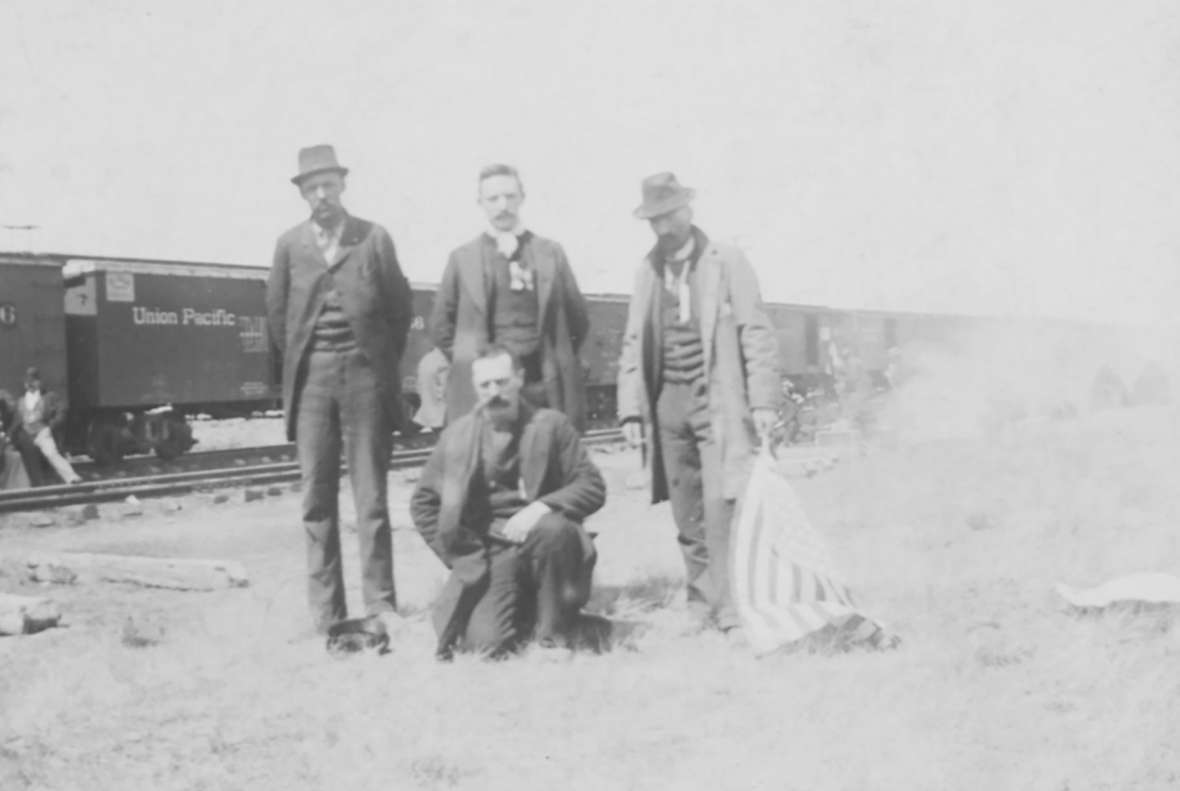
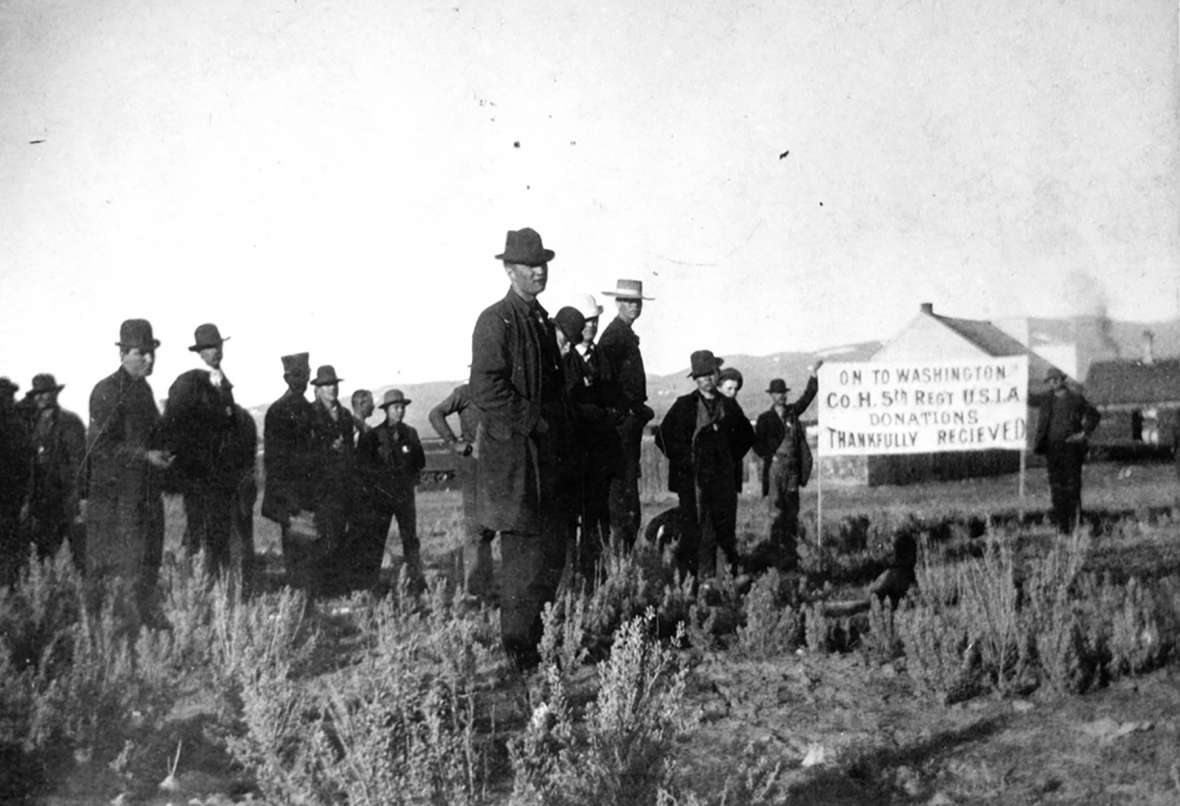
On the move along the rails
Some workers in Wyoming apparently were interested in joining the movement. In April 1894, the Laramie Boomerang reported that a “call will be made in this city for the organization of a reserve of the industrial army.” Protesters from other western states passed through Wyoming as well. On April 12, the Laramie Republican reported 27 box cars filled with 1200 protesters from California heading toward Wyoming from Utah. At Evanston, Wyo., the protesters were “met at the depot by almost the entire population of that town and [were] presented with an abundance of grub by sympathizing citizens,” including “five dressed beeves and other provisions which were thought to be sufficient for two days,” the Republican reported. Although the governor had Wyoming National Guard soldiers at the ready, by the time the train reached Green River, Wyo., the troops found the California Coxeyites “quiet and peaceable…and in the best of spirits.”
By the time they reached Laramie, they were fourth-page news—but still commanded half a page. Once again, the Laramie Republican reported that an “immense crowd of citizens…gathered at the depot and…were apparently filled with a curiosity to see what the contingent looked like.”
Perhaps wanting to avoid another detachment of the National Guard, however, the Coxeyites “whizzed through Laramie” and “several hundred begrimmed [sic] faces popped from the openings in the cars and gave-vent to a hoarse greeting.” They camped for the night at Red Buttes south of Laramie and received the same kind of hospitality from local citizens as they had seen in Evanston.
Then came news from neighboring states as well. Near the end of April, the Laramie Republican’s readers found out that about 1,000 men and 100 women had congregated in Denver’s Lincoln Park to formally organize as a “regiment” of Coxey’s Army. At the same time, “a lawless mob” of Coxeyites “seized upon a train upon the Northern Pacific at Butte, Mont., and started east.”
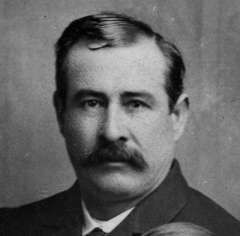
When marshals tried to arrest the Coxeyites near Billings, Mont., they were overpowered by the protesters and a few people were wounded. By mid-May, the news stories were reporting more on both “peaceable” and violent encounters with Coxeyites. Although Wyoming managed to avoid any physical conflict even when they were faced with the criminal element of protesters, citizens were no longer gathering in crowds to greet and cheer them on.
Stopped in Green River
Another contingent of Coxey’s Army made news across the state when they stopped in Green River, Wyo., where the Union Pacific-owned Oregon Short Line joins the main line of the UP. Led by S.L. Sheffler of Portland, Ore., the group of strikers had made their way on the Short Line from Portland to Montpelier, Idaho. There, about 250 Coxeyites stole a train and began heading east, but soon realized they were running out of provisions. On May 12, U.S. Marshal Joseph P. Rankin and eight newly sworn-in deputies attempted to detain them at Cokeville, Wyo., just over the border from Idaho, but were unsuccessful.
At Green River, Rankin and a deputy interrupted four Coxeyites attempting to cut the telegraph wires outside of town but didn’t catch them when they ran. Local authorities in the town organized a force of about 15 men in anticipation of the Coxeyites’ arrival. Their “general,” Sheffler, was in bed at the Big Horn Hotel in Granger, Wyo., west of Green River, when Marshal Rankin arrested him on May 14. Rankin arrested over 40 men in Cokeville but only sent 15, who were determined to be leaders, on to Cheyenne to face a state judge.
Rankin planned to send all the other Coxeyites back to Idaho but soon discovered he could not do so without a federal warrant. He took the names of the rest and ordered them to camp under guard at Green River while they awaited the warrant. Four companies, about 250 troops, were called in from Fort Russell at Cheyenne “through the request of Judge Riner of the United States court to protect the property of the Union Pacific from the commonwealers,” the Boomerangreported.
On May 17, U.S. Marshal Pinkham of Idaho was reported in Green River ready to take all the remaining Coxeyites back to Idaho for trial. Their camp in Green River began being called “Camp Rankin” by law enforcement, reported the Cheyenne Daily Sun, “in recognition of the excellent management of the marshal in capturing the industrialists who overpowered the Idaho marshal and in holding them until the troops arrived.” After just a few days, all those camped at Green River were sent back to Idaho under the watchful eye of Marshal Pinkham and two companies of soldiers. In Idaho, they were all found guilty and given minor sentences.
On May 24, the Lusk Herald reported that the “Coxeyites continue to steal trains on the various railroads and turn them in the direction of the east, notwithstanding the fact that they are being arrested as fast as they violate the laws.”
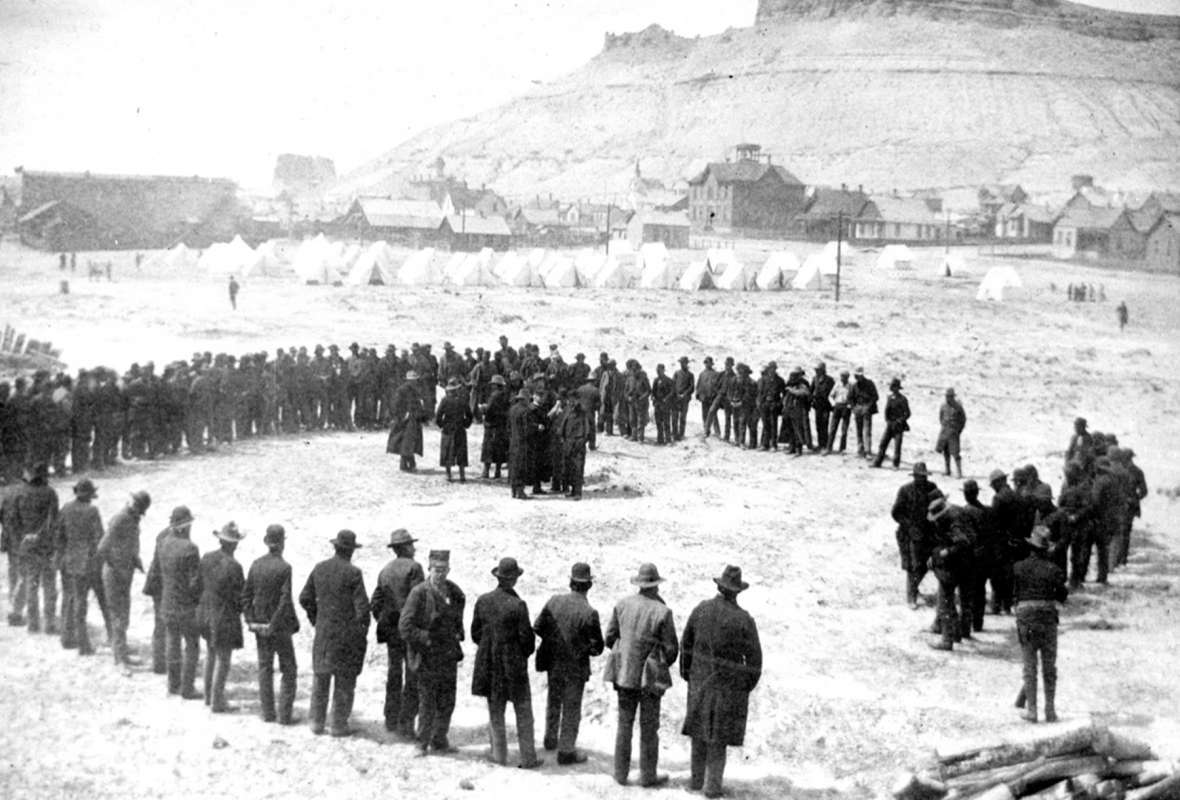
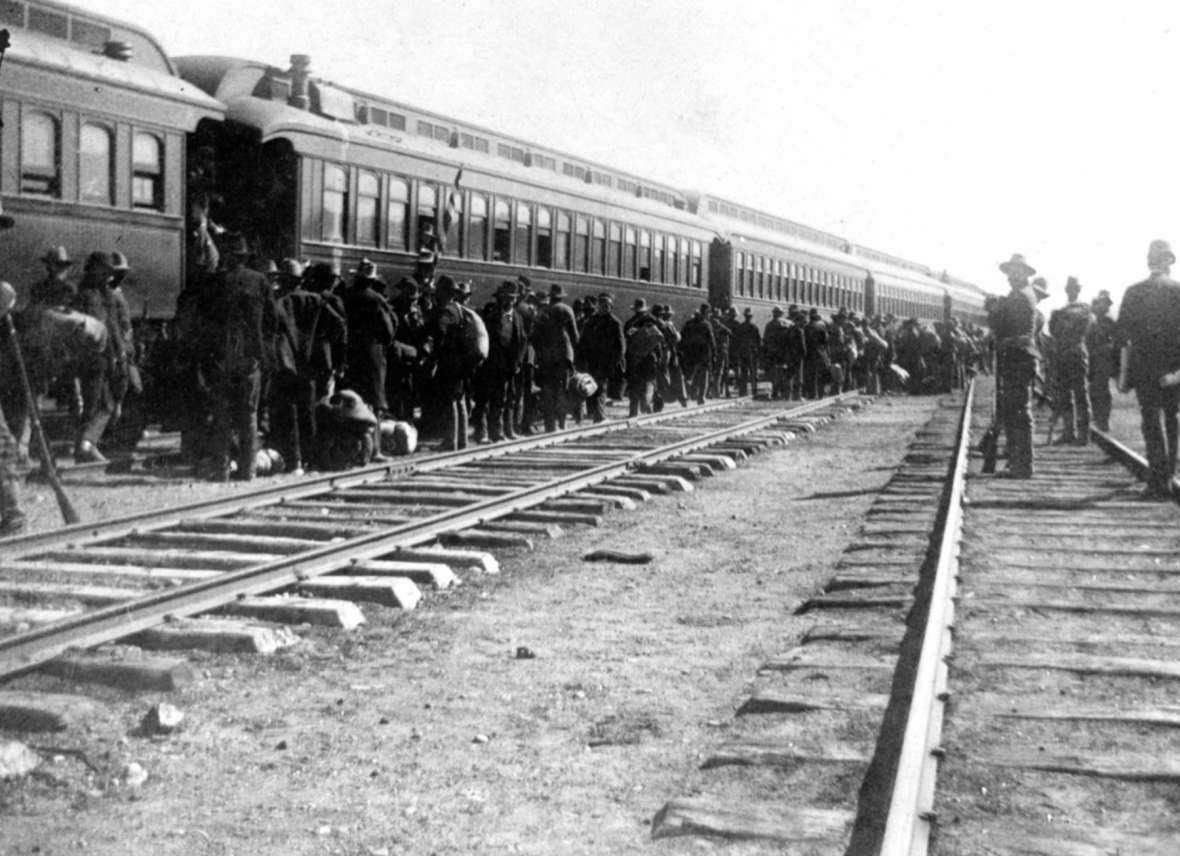
Dodging the lawmen
Though the protesters in Green River escaped arrest for a bit, some escaped altogether. On May 24, two leaders named Colehan and Breckenridge were interviewed by the press when they stepped off a train in Cheyenne, having escaped arrest in Green River. After telling the papers they intended to carry on to Washington, the Boomerang reported an “amusing” end to their tale in Wyoming. “The deputy United States marshals, from whom the two men escaped, learned of their presence in the city and at once set out to recapture their whilom prisoners. They failed. The strictest search resulted in nothing but weariness. The two ‘wealer leaders had disappeared as if by magic and not a sight of them could be had.”
Later, the Union Pacific declared “there will be no more trifling, and the Coxeyites, as far as the Union Pacific is concerned and those resisting the law, will be promptly arrested and jailed.” Rankin did not hold back when asked his opinion of the protesters. He declared that he was “disgusted with the Coxey movement,” according to the Carbon County Journal, which continued, “half the men he arrested at Green River were professional bums and that many of them left jobs to get a free ride and grub.”
Rankin made out fine in the end, however. For his arrest of the commonwealers in Green River, his office received the maximum salary allowable for the fiscal year, $6,000—around $206,000 today. This had never happened before and was unlikely to happen again.
As more reports of violence and theft of trains kept popping up in headlines, people in Wyoming began to lose sympathy for the protesters and stopped turning out in droves to greet them. Many Coxeyites across the country were reported in bad condition with little food or provisions.
Headlines in D.C.
In Washington, D.C. Joseph Coxey and two other national leaders of the movement made headlines across the nation when they were convicted. Because no one had ever congregated before on the Capitol grounds to protest, it was at first unclear exactly what crimes Coxey and his associates had committed. Claiming “it was evident that his conviction was not for what he had done, but because of the principles in behalf of which he had labored,” the Saratoga Sun reported that Coxey was found guilty of “having carried banners upon the capitol grounds, and…having walked on the grass.” Debates about how citizens may exercise their freedoms of assembly and petition continue today.
According to historian Jerry Prout, the movement, though its widespread press coverage, did “clearly open the public’s eyes to the essential humanity of the unemployed.”
This movement, along with many more strikes and protests in the previous and coming decades, helped push the federal government to enact legislation adopting Labor Day as a national holiday and other laws mandating fair and safe working conditions. Wyoming’s role in the Coxey’s Army story may be a footnote in the story of America’s Gilded Age, but it shows how Wyomingites, at the time, supported the struggle for workers’ rights that continues to this day.
Resources
Primary Sources
- Wyoming Newspapers, accessed at https://wyomingnewspapers.org/
- The Carbon County Journal. “Marshal Rankin Talks,” May 22, 1894.
- Cheyenne Daily Leader. “Fort Russell Troops Will Be Called Out,” May 15, 1894; “Safely in Idaho,” May 20, 1894; “Marshal Rankin in Luck,” May 20, 1894.
- Cheyenne Daily Sun. “Rankin Meets the Army,” May 14, 1894; “Officers Here,” May 17, 1894; “Waiting for Judge Riner,” May 16, 1894.
- The Evanston News-Register. “Judge Riner States,” May 19, 1894.
- Laramie Daily Boomerang. “Laramie Coxey Army,” April 27, 1894; “Guarding Coxeyites,” May 17, 1894; “Breckenridge and Colehan,” May 24, 1894.
- The Laramie Republican. “The Board of Trade,” April 12, 1894; “The Industrial Army,” April 13, 1894; “The great miners’ strikes,” April 26, 1894; “Regulars Called Out.” April 26, 1894.
- The Saratoga Sun. “The ‘Wealers,’” May 17, 1894; “Walked on the Grass,” May 17, 1894.
Secondary Sources
- Alexander, Benjamin F. Coxey’s Army: Popular Protest in the Gilded Age. Baltimore, Md.: Johns Hopkins University Press, 2015.
- Prout, Jerry. Coxey’s Crusade for Jobs: Unemployment in the Gilded Age. DeKalb, Ill.: Northern Illinois University Press, 2016.
- Schwantes, Carlos A. Coxey’s Army: An American Odyssey. Lincoln, Neb.: University of Nebraska Press, 1985.
- United States Bureau of Labor Statistics. “The Recession of 2007–2009,” February 2012, accessed April 26, 2022 at https://www.bls.gov/spotlight/2012/recession/pdf/recession_bls_spotlight.pdf.
Illustrations
- The photo of Joe Rankin, is cropped from a well-known photo of group of nine prominent Carbon County men, probably from the 1880s, including Tom Sun, Boney Earnest and Joe’s brother Jim Rankin. It’s from the collections of the Carbon County Museum in Rawlins, Wyo. Used with permission and thanks.
- The photo of the four men outside Laramie is from the Elmer Lovejoy collection in the archives of the American Heritage Center, University of Wyoming. Used with permission and thanks.
- The rest of the photos are from the collections of the Sweetwater County Historical Museum in Green River, Wyo. Used with permission and thanks.
